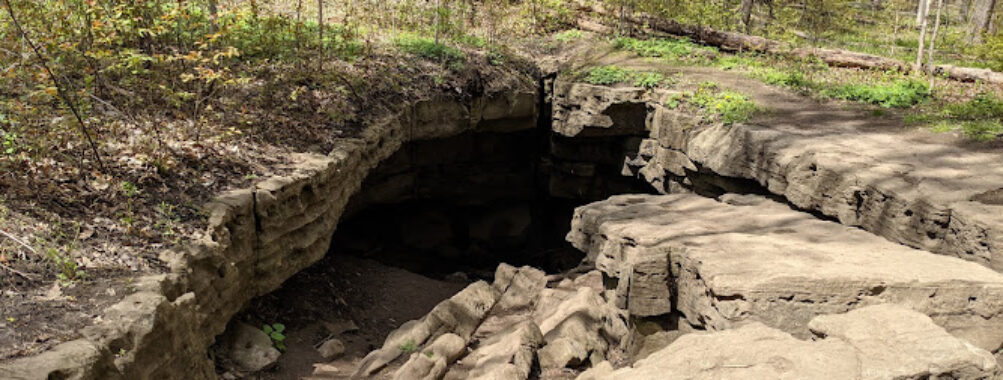
Eramosa Karst Conservation Area
Table of Contents
Description
The Eramosa Karst Conservation Area is a fascinating natural wonder that showcases Ontario’s unique geological heritage. This 93-hectare preserve features an incredible network of underground caves, sinkholes, and distinctive rock formations that’ll make you forget you’re just minutes from urban Hamilton. I’ve explored quite a few conservation areas in my time, but there’s something special about walking through a landscape that’s been sculpted by water over thousands of years.
The area’s most remarkable feature is its karst topography – that’s a fancy way of saying the limestone bedrock has been dissolved by water to create some pretty cool underground drainage systems. Trust me, even if you’re not a geology buff, you’ll be amazed by the seven caves, numerous sinkholes, and the disappearing streams that seem to magically vanish into the ground.
Key Features
• A 4-kilometer network of well-maintained trails and boardwalks suitable for various fitness levels
• Seven unique caves, including the Nexus Cave and Pottruff Cave
• Multiple waterfalls, including the seasonal Nexus Creek Falls
• Natural sinkholes and disappearing streams
• Dense wooded areas perfect for birdwatching
• Educational signage explaining the karst formations
• Accessible boardwalks and viewing platforms
• Several picnic areas with tables
• Modern restroom facilities
• Dedicated parking area with wheelchair accessibility
Best Time to Visit
Spring and fall are absolutely the best seasons to explore the Eramosa Karst. Spring brings rushing waters from melting snow, making those disappearing streams extra dramatic. Plus, the wildflowers start popping up everywhere – it’s honestly magical. Fall’s another winner with its stunning colors and perfect hiking temperatures.
Summer can get pretty busy, especially on weekends, but if you go early in the morning, you’ll beat both the crowds and the heat. Winter’s interesting too – the caves and rock formations look completely different under a blanket of snow, though you’ll need proper footwear as the trails can get slippery.
I’d recommend avoiding visits right after heavy rainfall because the trails can get muddy and some areas might be temporarily flooded. The caves are most accessible during drier periods, but remember – they’re always wet inside, so dress accordingly!
How to Get There
Getting to Eramosa Karst is pretty straightforward. It’s located in upper Stoney Creek, just east of Hamilton. From the Lincoln Alexander Parkway, you’ll want to head up Upper Mount Albion Road. The conservation area has a dedicated parking lot that’s well-maintained and offers plenty of spaces, even on busy days.
If you’re taking public transit, Hamilton Street Railway (HSR) runs buses that’ll get you pretty close, though you’ll need to walk a bit from the nearest stop. For cyclists, there are several bike-friendly routes connecting to the conservation area, and bike racks are available near the main entrance.
Tips for Visiting
Ok, here’s the real talk from someone who’s been here more times than I can count. First off, wear sturdy shoes – those fancy new sneakers aren’t gonna cut it on these trails. The terrain can be uneven and sometimes slippery, especially near the caves.
Bring a flashlight or headlamp if you’re planning to peek into the caves – your phone’s flashlight just isn’t gonna give you the same experience. And speaking of phones, download a trail map before you go because cell service can be spotty in some areas.
You’ll definitely want to pack water and some snacks. While there are picnic tables scattered throughout, there’s no food or drink available for purchase on site. Bug spray is your friend from late spring through early fall – trust me on this one!
For photography enthusiasts (I’m one myself), early morning or late afternoon light creates the most dramatic shadows around the rock formations. And if you’re into wildlife photography, bring a zoom lens – the area’s home to some pretty interesting birds and small animals.
Dogs are welcome, but they must be leashed at all times. I’ve seen too many excited pups trying to explore the caves off-leash, which isn’t safe for anyone. Remember to bring waste bags and water for your four-legged friend.
The trails are well-marked, but some of the side paths leading to interesting features can be easy to miss. Take your time and don’t be afraid to explore a bit – some of the coolest spots aren’t obvious from the main trail. Just stay on designated paths to protect the sensitive karst environment.
Last but not least, give yourself at least 2-3 hours to properly explore. Sure, you could rush through in less time, but you’d miss out on so many amazing details. And believe me, once you start discovering all the little hidden gems this place has to offer, you’ll want to take your time!
Remember: Leave no trace and take only pictures. And maybe pack a light jacket – even on warm days, it can get chilly near the caves. The Eramosa Karst is one of those special places that reminds us just how incredible nature can be, so let’s help keep it that way for future visitors!
Location
Places to Stay Near Eramosa Karst Conservation Area
Find and Book a Tour
Explore More Travel Guides
No reviews found! Be the first to review!